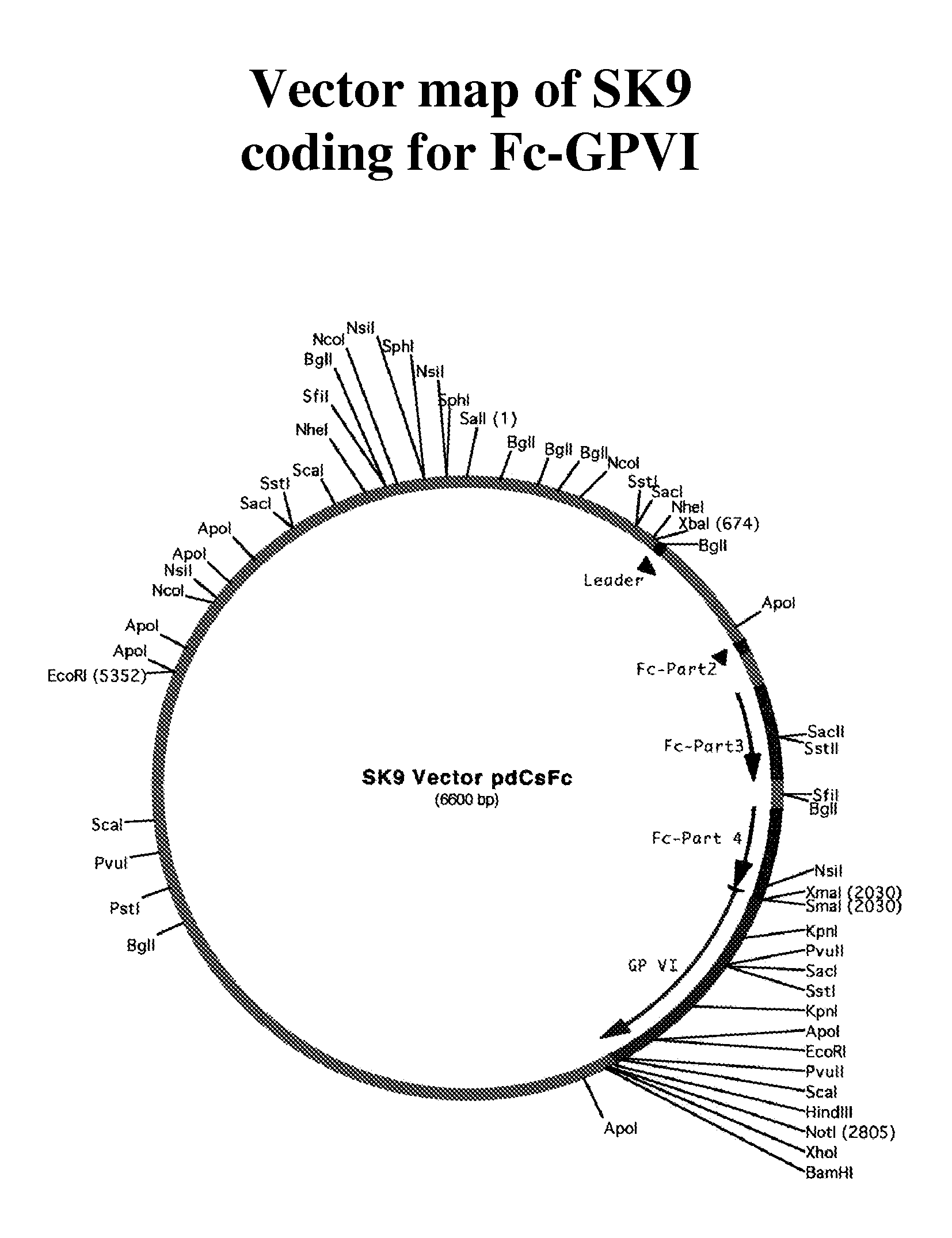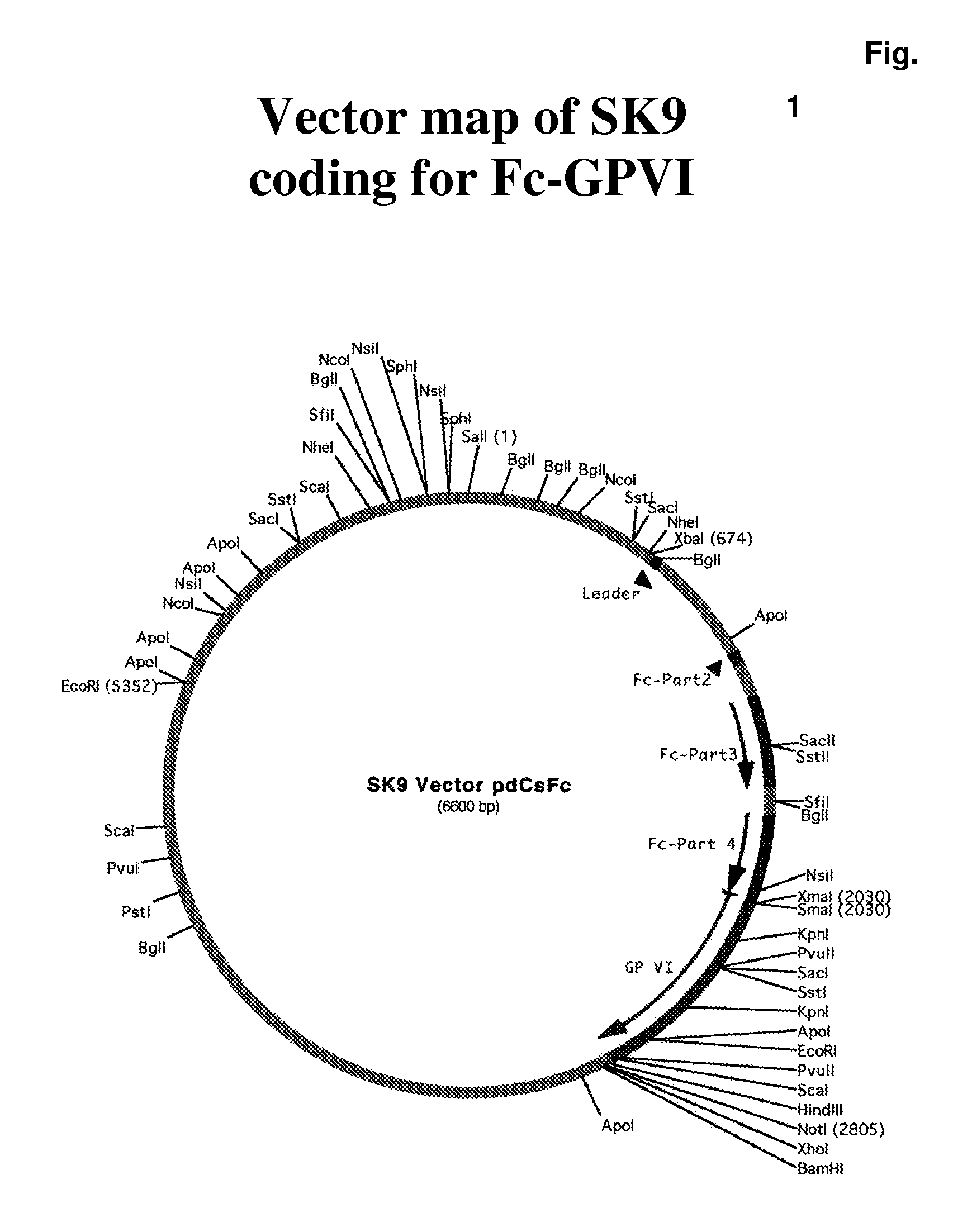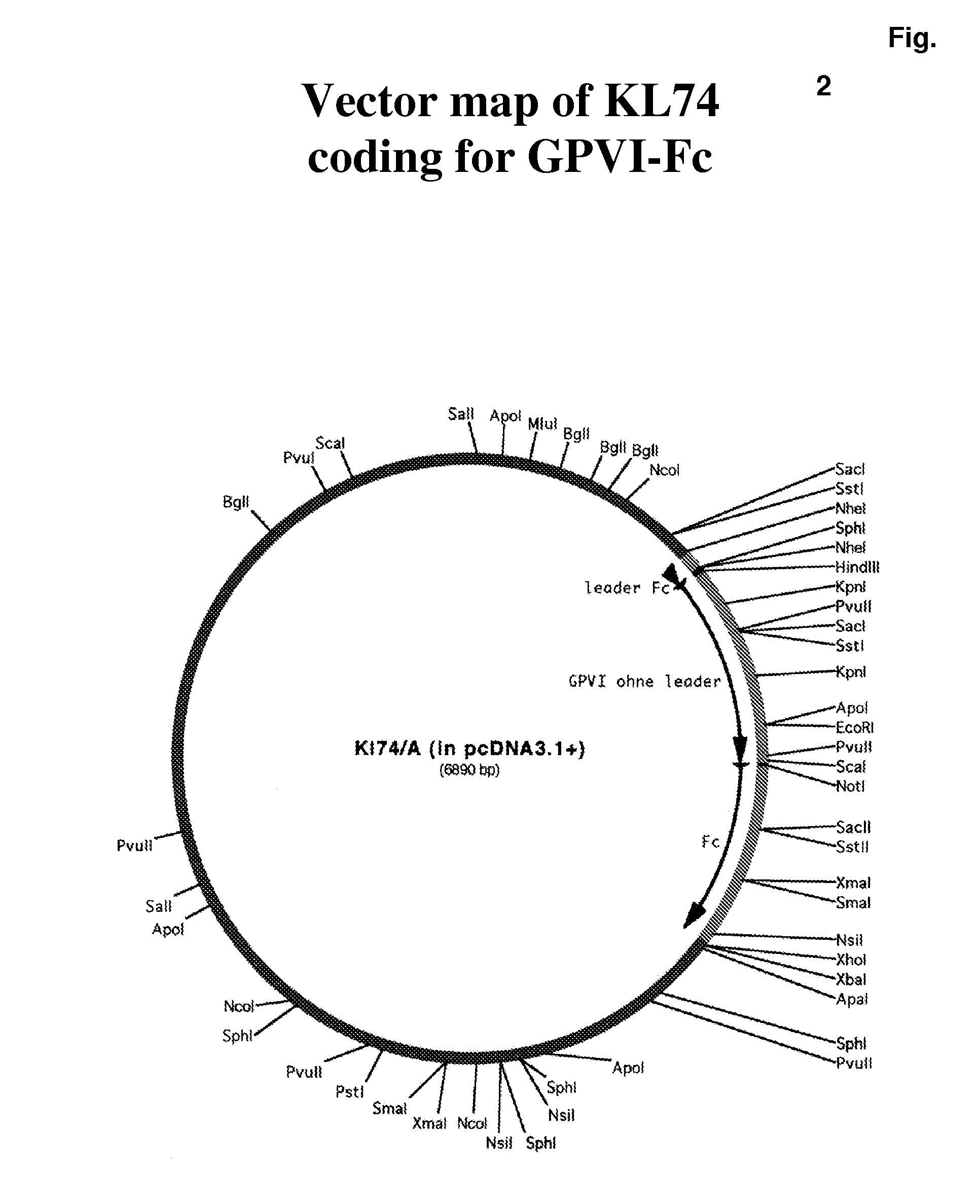Glycoprotein VI fusion proteins
a technology of glycoprotein and fusion protein, which is applied in the field of glycoprotein vi (gpvi) fusion protein, can solve the problems of high cost of therapy and difficulty in purification, and achieve the effects of easy purification, enhanced circulating half-life and easy detection
- Summary
- Abstract
- Description
- Claims
- Application Information
AI Technical Summary
Benefits of technology
Problems solved by technology
Method used
Image
Examples
example 1
Construction and Expression of Fc-GPVI Fusion Protein (SEQ ID NO: 1)
[0108]To construct the fusion protein, the vector pdC-Fc-X (described in K-M Lo et al, Protein Engineering 11: 495-500, 1998) was used. This vector encodes for a human Fc of IgG1 with a signal peptide of a murine antibody. Transcription is utilized by the enhancer / promoter of the human cytomegalovirus and the SV40 polyadenylation signal. For construction, first the extracellular part of GPVI without the leader sequence (aa 21 to aa 269) was subcloned into a Topo vector using standard PCR methods. In this step a Xma I side was introduced at the 5′ part of the gene and a Hind III side at the 3′part of the gene. In addition a linker of the 3 amino acids Ser-Pro-Gly was introduced located between the end of the Fc portion and the start of the coding region of GP VI in the Fc-GP VI fusion protein. In a final step the XmaI-Hind III fragment coding for the modified extracellulare part of GP VI was cloned in frame behind th...
example 2
Construction and Expression of GPVI-Fc Fusion Protein (SEQ ID NO: 2)
[0110]For construction, a standard expression vector, pcDNA3.1+ (Invitrogen) was used. In a first step a leader sequence of oncostatin M (DNA Seq.Acc. M27286) with Nhe I restriction sides introduced by PCR on both sides was cloned into the Nhe I side of pcDNA3.1. Next the hinge, CH1, CH2 and CH3 portions of Ig Gamma1 from a cDNA (DNA Seq.Acc. X81695 and Z17370) with a Not I side at the 5′ end and a Xho I side at the 3′ end of the coding region was introduced by PCR into the Not I / Xho I side of the pcDNA3.1 vector containing the leader sequence. The Ig hinge cysteines were mutated to serine residues. In parallel the extracellular part of GPVI without the leader sequence (aa 21 to aa 269) was subcloned into a Topo vector using standard PCR methods. In this step a Hind III side at the 5′part of the coding region was introduced as well as a Xho I side at the 3′part of the gene. In addition a linker of 7 amino acids (Leu...
example 3
Production and Purification of Fc-GPVI
[0112]For production of Fc-GPVI fusion protein a stable cell clone was cultivated in an Integra Minifermenter using serumfree media in the cell compartment. The cell free supernatant was used for purification of the fusion protein.
[0113]The supernatent was adjusted to pH 7.4 and the fusion protein purified using a protein A affinity column (Pharmacia®) with 0.1 mM citrat acid, pH 2.8. The protein containing fractions were neutralized using a Tris buffer with pH 9.0. In a final step using a Sephadex® G25 column a buffer change to PBS, pH 7.4 was performed. The purified protein from the supernatant was analyzed using western analysis, Biocore and ELISA. The protein was stored at −70° C.
PUM
| Property | Measurement | Unit |
|---|---|---|
| Biological properties | aaaaa | aaaaa |
Abstract
Description
Claims
Application Information
 Login to View More
Login to View More - R&D
- Intellectual Property
- Life Sciences
- Materials
- Tech Scout
- Unparalleled Data Quality
- Higher Quality Content
- 60% Fewer Hallucinations
Browse by: Latest US Patents, China's latest patents, Technical Efficacy Thesaurus, Application Domain, Technology Topic, Popular Technical Reports.
© 2025 PatSnap. All rights reserved.Legal|Privacy policy|Modern Slavery Act Transparency Statement|Sitemap|About US| Contact US: help@patsnap.com



